Last week I had the honor to host an official webinar with Preply, an online teaching platform I’ve been working at for 4 years now. In this webinar, we discussed the teaching methodology needed to teach young learners effectively. The webinar was live-streamed on the official Preply Facebook page. So here are some tips for teaching young learners online!
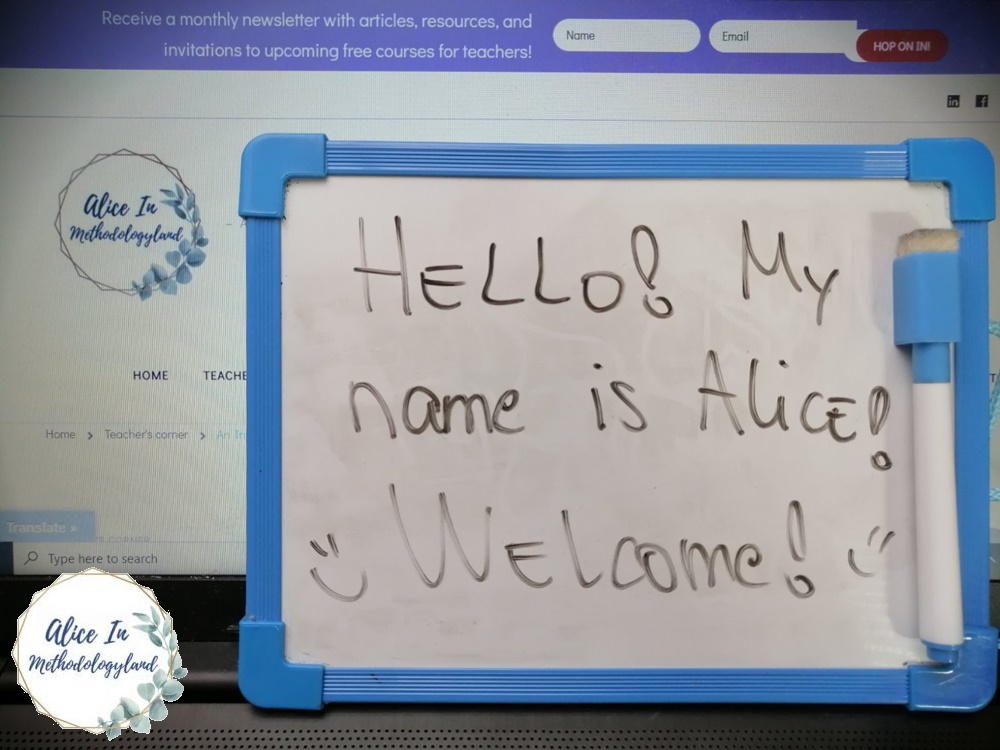
Webinar content: 10 steps and tips for teaching young learners online effectively
- Transferring your skills from teaching adults to teaching children – adapting your current methods and mindset, not reinventing the wheel.
- Motivating children with engaging activities (Why are variety, interactivity, and dynamic important?).
- What is TPR and how to apply it? (TPR is total physical response AKA using your body to learn languages and remember better.).
- How to engage in contextual grammar teaching? (practical examples from my lessons).
- Storytelling methodology 101 (short steps + practical live demo).
- Dramatization 101 (short steps + practical live demo with a puppet).
- Using music to learn English 101(short steps + practical live demo).
- Classroom management.
- Including the parent and effective communication with the parent – the sandwich feedback method.
- Young learner teacher toolkit – digital and real-life toolkit (list of 10 engaging websites, free legal pdf books + how to make your own props, flashcards & puppets quickly during lockdown).
Starting the webinar with the daily calendar
Classroom rituals develop a sense of routine and establish a connection between the child and the preschool. They also develop the teacher-child relationship, children’s emotional intelligence, and prepare children for enrolling in elementary school.
Preschool – Daily and Weekly Rituals And Activities In Our Classroom
We started the webinar with a daily calendar ritual to review dates, numbers, weather, day of the week, and seasons. Unfortunately, these concepts are sometimes tough for the children to learn, so it takes a lot of word recycling and reviewing daily.
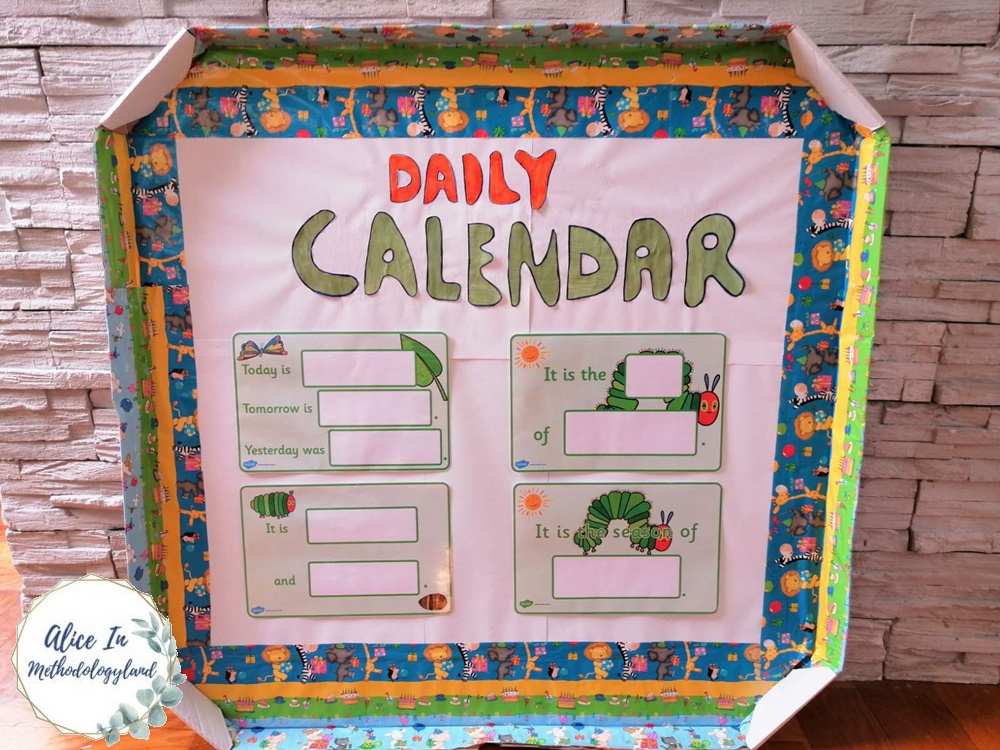

Teaching adults VS. teaching children online
- Communication also involves the parents, since parents are the ones who pay for the lessons;
- Shorter attention span where effective learning should not exceed 45 minutes;
- Easily distracted, which is why the activities have to be dynamic;
- Not willing, not their choice – some children do not want to learn, and they are pushed into the lessons by the parent, in which case we need to make the child feel as comfortable as possible during the lesson.
Motivating children with engaging activities
- Lots of movement;
- Changing the activities quickly – individual activities should not last more than 5 minutes each;
- Connecting the activities to their life – for example, individualized flashcards, creating books & posters;
- Sharing certificates and digital badges will motivate the child to learn more and you can make them easily in Canva;
- Letting them select the last activity in the lesson from a list of given activities to let them have a certain amount of control of what will they do next and motivate them to actively participate.


Using TPR (Total physical response) while teaching young learners
- Using your body to learn something – kinaesthetic learning;
- Start easily and add more steps – Start with the first verse, repeat after that and add new moves only if the child mastered the old ones;
- Get up and do the activity WITH the child!;
- When introducing a new TPR activity, don’t forget visuals (flashcards of objects) and demonstrating the moves yourself;
Let’s practice yoga and walking through the jungle.
How to include contextual grammar
What is contextualized grammar instruction?
The eternal debate of teaching grammar implicitly or explicitly will probably never cease. This debate created the need for further research, and now almost all researchers agree that grammar should not be taught explicitly. (Goode, 2000; Sams, 2003;). The rationale for teaching grammar in such a way is the early language acquisition – children learn their native language through an authentic context, and they can speak it perfectly without anyone explaining what is present simple or past simple. So how can we use this to contextualize grammar instruction? We can start by forgetting frontal teaching and drilling, and use authentic language in books, films, newspapers, and even songs.
Contextual Grammar Teaching – Activities for Making Grammar Meaningful to Your Students
Some grammar rules and tips for teaching young learners online
- Individualized activities based on what children like to do and how they learn best – listening, practical activities, speaking, writing, and so on;
- Grammar through conversation;
- No structure drilling of any kind before the age of 10!;
- No explicit grammar teaching before the age of 10! – This means that grammar should be taught through conversation and practical activities, and not by explaining grammar rules;
- If we have to use already made worksheets, we need to make sure that they are designed properly, interactive (Liveworksheets.com) or individualized (Index cards from British Council Kids where children can enter their examples).
- Examples of individualized implicit approach to teaching grammar from my classroom: Practical use of prepositions while giving a house tour, creating a collection of teacher’s and student’s photos of old hairstyles, comparing them and using them to practice the past tenses, chanting to remember irregular verbs. For more ideas on how to teach grammar contextually, read my featured post on British Council Teaching English.
- Irregular past tense verbs bilingual flashcards on Quizlet– I created this individualized flashcard set on Quizlet, which also has photos and translations to the student’s L1 to make it easier to remember.
Song/story selection checklist
When selecting a song, we must use the following checklist, and all the answers to the questions must be YES:
- 1. Is the song connected to the language and lesson content?;
- 2. Is the song compatible with learners’ level of language proficiency?;
- 3. Is the song attractive in melody and rhythm?;
- 4. Is the song easily adaptable to actions and/or dramatization?;
- 5. Is the song repetitive in text, rhythm, and melody?;
- 6. Is the song engaging and motivating?
Effective scaffolding in teaching young learners online
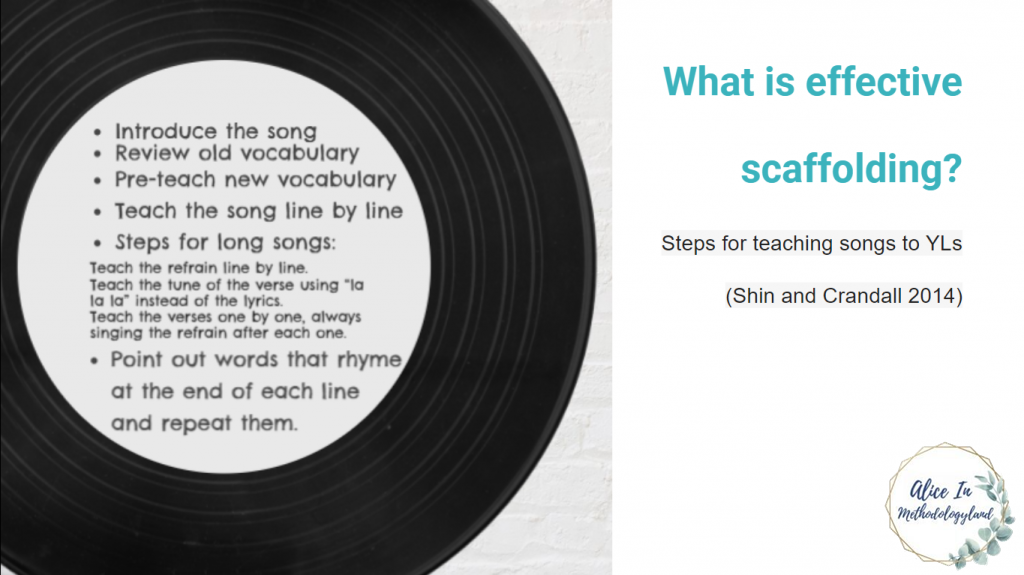
Let’s practice with Are you hungry!
In this part of the lesson, we learned the song with flashcards, line by line, and then I played a keyboard to make it more motivating to the present participants.

Activities to engage and recycle
As the language needs to be repeated for the learner to remember the new words, engaging and recycling the content is a must. Here is a list of activities you can do with a song in your class:

Dramatization 101
- Have 1 puppet which will be your sidekick in lessons which are not storytelling and invent the characters and stories for that puppet (The orange fox in the picture below is my sidekick;
- Have a puppet for every story you will dramatize;
- Hide behind your table/some kind of sheet while you dramatize;
- Practice speaking at different volumes and tempos;
- Practice changing voices – without a changed voice your puppet will not make much sense, and the child will not be interested!

Storytelling methodology 101
- Select a language level appropriate story – you must read the story before you decide to use it and think if a child you teach would be able to understand it.;
- Pay attention to the tenses – English language learners do not start learning the past tense before the age of 10, so you need to edit the tenses and retell the story in present simple;
- Pre-teach the vocabulary with flashcards, gifs, or TPR – pre-teaching the vocabulary is one of the most important preparational steps for storytelling and it makes the story easy to understand;
- Give listening tasks to children – the children should not just sit and observe your storytelling. Give them tasks – how many animals have you seen, how many boys and girls, remember some rhyming words, etc. Listening tasks promote active listening, which deepens the understanding of the book you read;
- Dramatize and ask questions – do not just read the book! Ask the child to answer a question to something you just said or pointed to;
- Post-dramatizing activities serve as a way to promote retention and to give a project children can do with their parents at home. These activities include story sequencing, discussion, illustration description, draw your ending, find rhyming words, etc.
- Dramatize for the second time, and motivate the child to follow you;
- Let’s practice with Class 2 at the Zoo + interactive pre-teaching and post-dramatizing activities!
What about parents?
- Transparent and honest communication with parents is essential;
- Tell parents politely when their expectations are set too high;
- Communicate often – Tell parents about their children’s progress & struggles;
- Set boundaries and rules at the start – If the parents want to be present in the sessions they should not translate, answer if their child doesn’t know the answer, and most importantly PARENTS SHOULD NOT CORRECT EVERY MISTAKE A CHILD MAKES. In my experience, parents always do that, and it took a lot of effort from my side to convince those parents that stopping their child in the middle of the sentence to correct them is counterproductive. It also destroys their motivation to learn a language, and it makes them less confident.
- When parents are present in the lessons with their children, communicate!
Webinar presentation
To review the content quickly and concisely, go through the presentation slides of the webinar below.
The live stream of the webinar on Facebook
I apologize because the quality of the live stream is not so perfect. Preply will upload the webinar to YouTube soon, and the quality of the recording will be much better.
To conclude and participants’ feedback
The webinar was amazing! Most of the tutors on Preply are not professional teachers, but they were motivated to listen and participate. They were very interested in everything I presented, and they were happy to learn so many new things. I was amazed at how grateful they were, and I think It was the most enjoyable webinar out of all webinars I did so far. They immediately asked for more webinars and trainings, and I hope to collaborate with Preply and host a training again!
What are your tips for teaching young learners online? Write in the comment section or via the contact page. I would love to hear your opinion.

Resources for further learning/Young learner teacher toolkit
- Shin, J. K. & Crandall, J. (2014). Teaching young learners English: From theory to practice. Boston: Heinle ELT, Cengage Learning.
- DIY puppets
- DIY flashcards from newspapers;
- Learning English through Music and Movement (workshop reflection);
- Interactive online games, videos & ready-made worksheets;
- Classroom rituals;
- Using drama activities and TPR to enhance literacy;
- BONUS: Podcasts for children.

Click here to explore my store where 99% of materials are forever free!
All the materials except lesson plans and 30+ page interactive activity books will be free FOREVER! Why? Because sharing is caring, and 2020 hasn’t been kind to all of us. Please consider donating so I can keep making FREE materials for everyone and keep my website open for all of you.
Don’t forget to leave a review when you download materials! It’s just a minute of your time, and it means a lot to me.
P.S. The store and the freebie library are not the same thing – the freebie library has some extra materials like conference presentations and webinar recordings which are not available in the store ✨
The subscription link for the store is below my bio in every post. ?


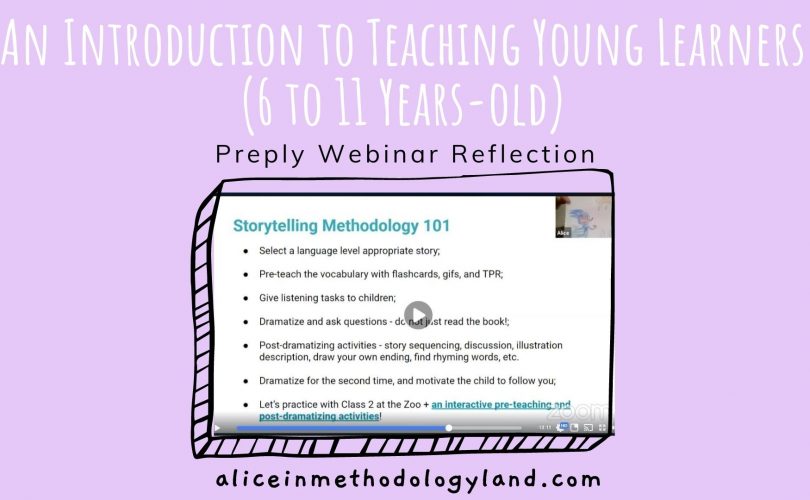


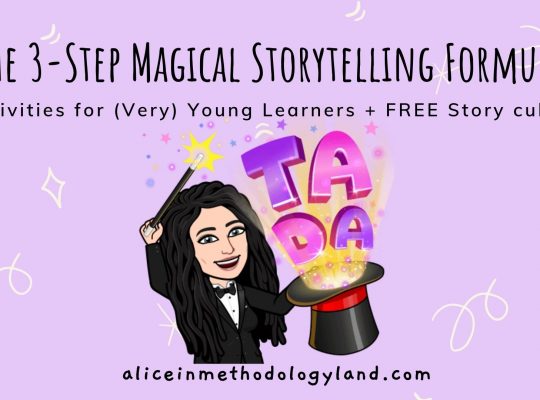
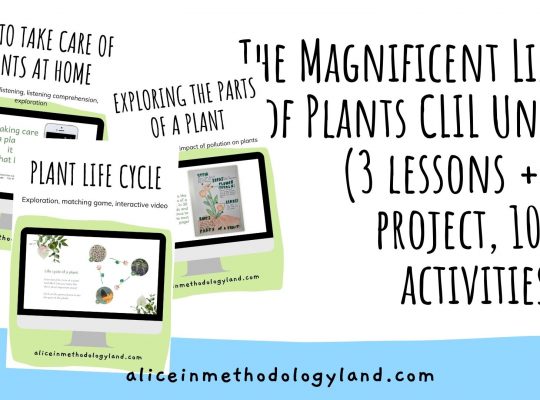
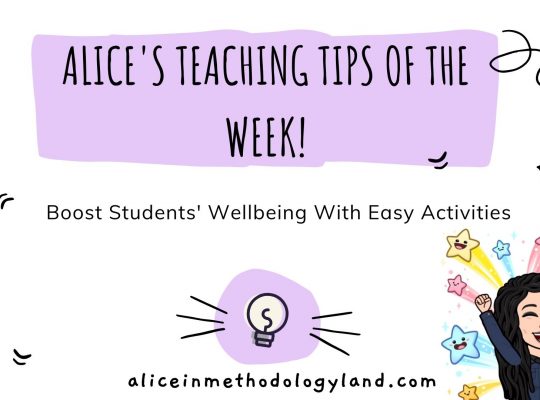

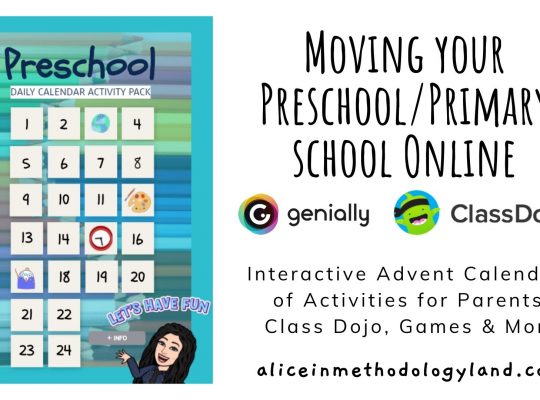
Amazing! Thanks a million! :)
Thank you! I’m glad it helped you! :)
[…] An Introduction to Teaching Young Learners (6 to 11 Years-old) – Preply Webinar Reflection Webinar-Based Group Lessons for Young Learners Aged 8-10: Recordings, Methods & Reflection […]